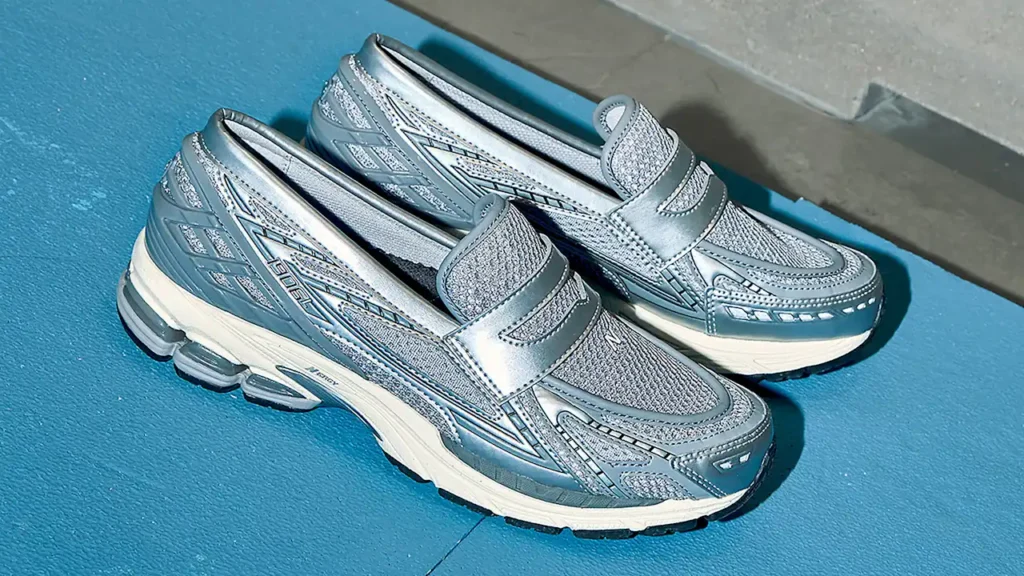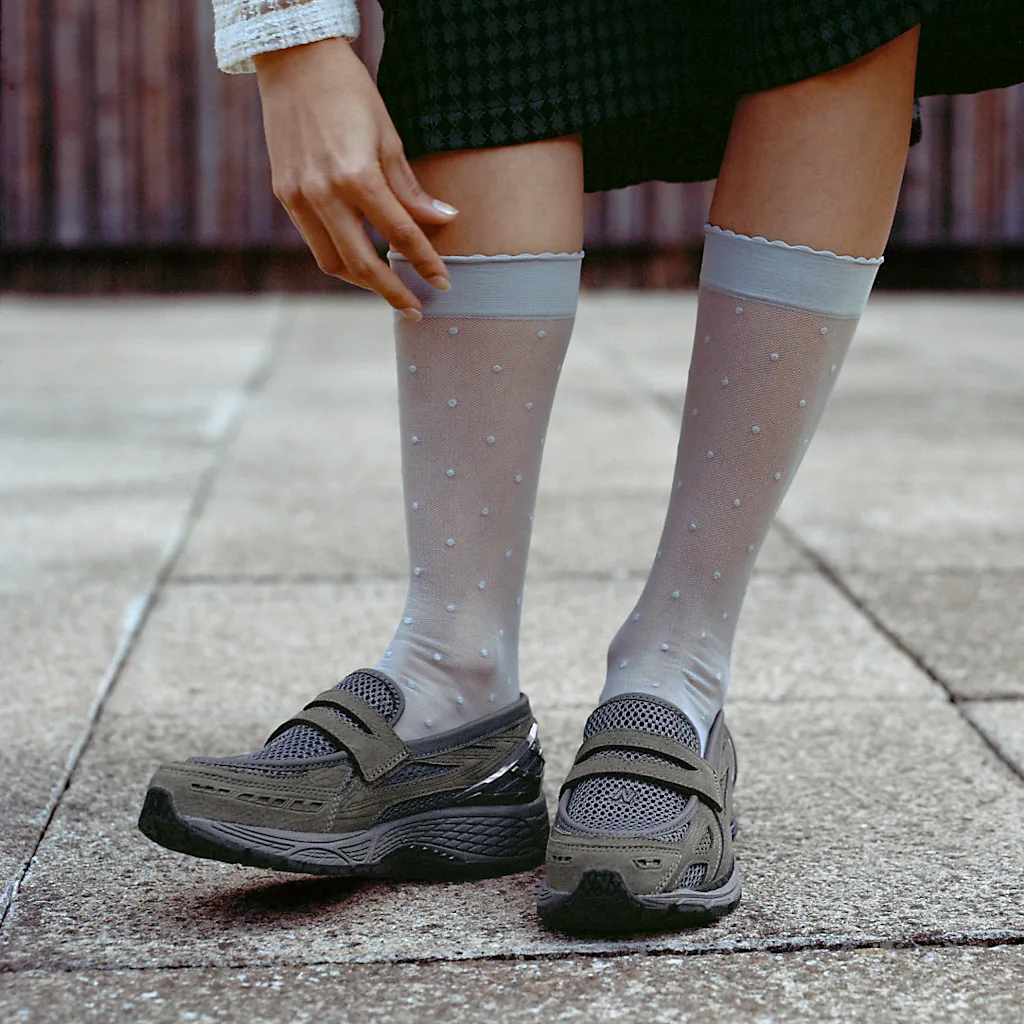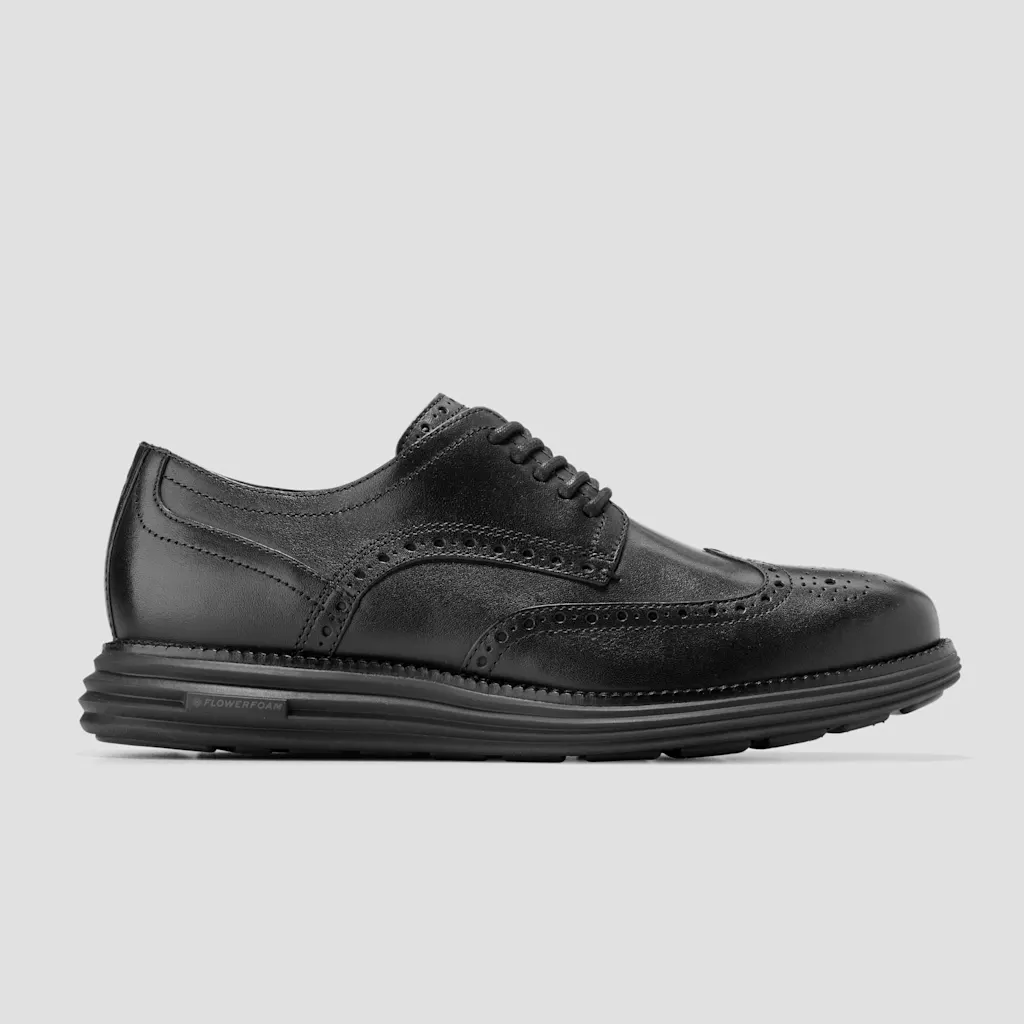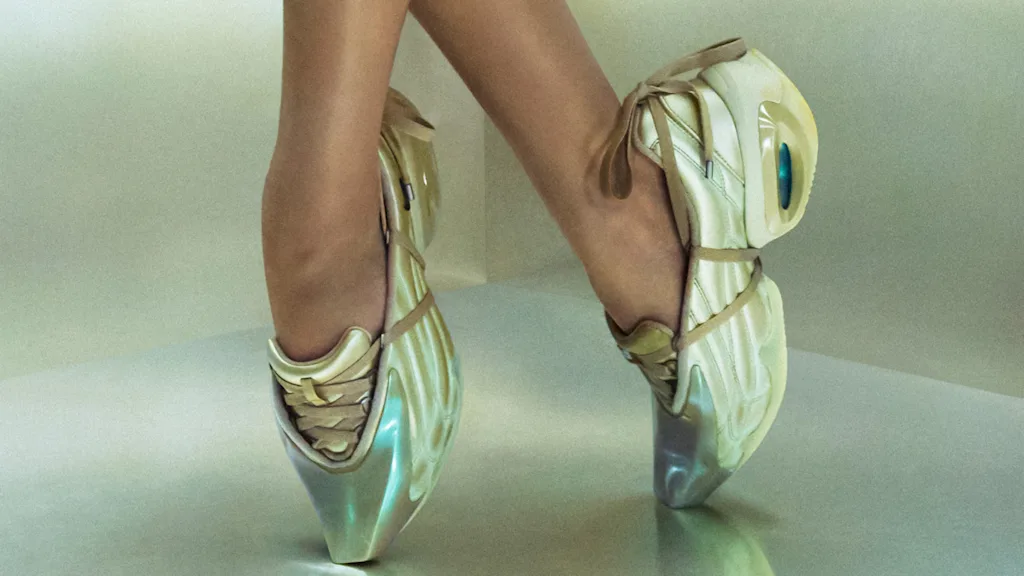
It feels like they match anything.
Black. Silver. White. Cream. All rendered in gloss and knit. I wasn’t sure how the silhouette would look in person when I first saw it in photos from Junya Watanabe’s Fall/Winter 2024-25 show. But they made my stomach churn in just the right way.
I needed them. And so did a lot of other people.
The New Balance 1906L launched last year, kicking off a new type of shoe: the sneaker loafer, aka (and please never say this term aloud) the snoafer. With a loafer silhouette, technical fabrics, and bouncy foam outsoles, they represented a new mix of formal wear and street style. Nike, Hoka, and Puma all quickly followed suit with snoafers of their own. While in Madrid, I snagged some by Hispanitas for my wife—only learning that they were the store’s last pair as I checked out.
Snoafers did more than redefine what we consider a sneaker since launching last year; they resuscitated loafers more broadly. Karis Munday, an analyst at the fashion trend firm Edited, says loafer sales are up 33% year over year for men and 28% for women this fall, in a surge she doesn’t see fizzling out soon. “The sneaker-inspired iteration will be a must-have investment, offering a smart-casual solution that serves equally well in a business casual environment as it does for weekend wear,” she shares over email, calling the 1906L the “blueprint” for the industry.
But how did New Balance know it could pull this idea off?
“A loafer is a preppy shoe. New Balance has preppy connotations,” says Charlotte Lee, the design manager at New Balance who created the 1906L. “It’s a Venn diagram . . . where the center is the sneaker loafer.”

The evolution of streetwear
Lee is a trained footwear designer who has been at New Balance for over a decade. She’s obsessed with aesthetics and culture, but says she’s always been intimidated by the streetwear side of her profession. “I still feel like an outsider, even though I’m obviously, well and truly, an insider,” she says.
Indeed, once disregarded by the fashion industry, streetwear—a mash-up of fashion aesthetics stemming from city subcultures like hip-hop and skate—has been on a 20-year ascendancy into mass culture. Now it’s become part of the lexicon of dress, often dissociated with any cultural origin.
In 2023, I was at the Musinsa Empty shop in Seoul when I pulled a ripped, decaled pair of jeans off the rack and mentioned to the shopkeeper that they had a “street” vibe. You could trace the pants’ visual lineage to punk rock in London (literal street style), or more recently, to Virgil Abloh’s Pyrex Vision, which started by screen-printing on deadstock jeans. The manager looked at me blankly, saying, “That’s not street.”
Sneakers are the greatest motif in streetwear—and they’ve very much become the mass-produced art of our time as sculptures molded for our feet. As I debated with designer Jeff Staple recently, there’s no certainty that such a motif will keep its relevance. It seems like a dozen new sneakers fill our feeds each day, and no art movement lasts forever. Impressionism and surrealism both burned out within 20 years.
Designing the New Balance 1906L
The 1906L is so interesting because it offers a thesis on how sneakers can evolve to stay relevant. It’s a rare project that was able to cut through the noise to redefine the industry. And perhaps it was Lee’s point of view, as an insider-outsider who is not too beholden to tradition, that was so crucial in manifesting it.
“For me, it’s not just looking at streetwear; it’s looking at all facets of culture to be able to try and inform the shoes I’m working on,” Lee says. “[The 1906L] was born from the concept of integration, the juxtaposition between two worlds: the influence of formal dressing within society and culture, and fashion and trend.”
As Lee tracked a bit of buzz around loafers—spotting them here and there across the luxury market in the early 2020s—she discovered her perfect juxtaposition for sneakers.
“It was an indulgent project for me, because it was cheeky. And it was a bit like, ‘Can we? Can’t we? Shall we?’” she recalls. But once the concept was in her brain, she realized the form immediately. “This is not a flex, but I literally drew one with CAD [computer-aided-design software],” she says, laughing.
Truly, her first draft made it to production, minus a few slight adjustments. When she initially presented the design to the team, the response was a rare, simple, unanimous yes. This was 18 months or more before the shoe was actually released.
She says, only upon further reflection on the project, that the shoe solidified so smoothly because it just had to be made this way to feel authentically New Balance. The loafer silhouette already spoke for itself. And the rest was about framing that loafer with New Balance performance DNA.
“It had to be mesh initially . . . like, it had to have that kind of classic silver overlay, the 2000s running aesthetic,” she says. “That was all I needed to do, because I knew then the rest was all New Balance DNA, like identity, and I kind of squished it in and made sure it fit in the shape and within the boundary of what a loafer is.”
More probing reveals a touch more thought, however quickly it came together. When I ask why my shoes feel like they match anything in my closet, she notes that was by design. She pulled the blacks, whites, and even the silver in my shoe from New Balance’s existing line of lifestyle sneakers, like the 1906R. These colors have already been proven for a wide variety of fashion contexts.

A trend that won’t die
Notably, Lee wasn’t the first to mash up formal shoes and sneakers. That idea likely belongs to designer Salehe Bembury, who stuck EVA foam on Cole Haan wingtips in 2014 for his ØriginalGrand, but the concept never quite gelled to reach a larger scale.
Lee had a feeling the shoe would be a hit due to its polarizing, disjointed identity. Loafers are among the most versatile formal shoe—one that can be dressed up more than a boat shoe—but are also easier to doff and don than a New Balance sneaker. “I wear them all the time, not because I’m being self-indulgent, but because I’m lazy,” she says. “Like, you just slip your foot in, and off you go.”
But she was also worried that the shoe was arriving too late, and that loafers would already be over by the time it shipped. It turned out to be the opposite.
“We’re way past launch, and I think it’s still continuing,” she says. “I think what we’re seeing now is a diversification of integration . . . how can we integrate two worlds that shouldn’t belong, but when they’re in perfect harmony, they do belong?”
I actually believe it’s not just about mashing up two unlikely ideas. I think the snoafer has given us one of the first truly convincing theses on how the sneaker can evolve, and how we can reconcile our penchant for foams with wider, more formal visions of self-expression.

The Knwls Air Max Muse—a collaboration between Nike and the London fashion house Knwls—feels like the perfect acceleration of concept. At first glance, you might call it a ballet sneaker, and it is. The ballet sneaker is partly inspired by the ballet flats of dance class, but when you really study where their silhouettes are going on the chunkier end of the outsole equation—like the Muse, you’ll also see the almost hoofed posture of a Tabi heel, and a smooth shadow of a loafer.
Sneex (created by the founder of Spanx), like other head-on attempts at a high-heel sneaker, are pretty cringe. I’d argue that’s because they weren’t refined within the established design language and limitations of the sneaker. Meanwhile, the Muse is basically a heel for the sneaker age—right down to its sharply pointed toe box—and I’d suggest the Simone Rocha “tracker” ballet flat verges toward the same idea.
Today, we’re witnessing an evolution of the sneaker itself, born from a culture finally prepared to reconcile its technical materials and motifs—not simply as fodder for athletic performance or fashion trend, but as a tradition of design that’s essential to craft and culture alike.
Just please don’t call it a snoafer.


